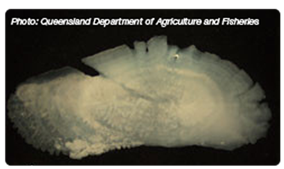Find fun facts on Gladstone’s favourite catch
Gladstone’s waters are full of fascinating fish that have amazing survival and predatory traits. Did you know that a barramundi will change from male to female at about five years of age? The barramundi don’t know this, but their sex change is a smart move as the Queensland Government has laws in place to protect large female barramundi from ending up on your dinner table.
Some other local fish species can get you back even after you’ve caught them. Large predatory offshore (or pelagic) fish like the Spanish mackerel (in the picture below) can be carriers of ciguatera which will cause a nasty case of food poisoning if you eat them, which would not be fun!
Read more about this on the Spanish mackerel fact sheet so you don’t get caught out!

Make sure to check out the fact sheets on this page to find out more about the fish that anglers of all ages want to catch in the Gladstone area, as well as some simple ways you can help protect these important animals. Also get involved in the activities on this page which offer lots of educational (and only slightly fishy) fun for the whole family.
Facts
Ringing in the ears?

You can estimate the age of a Barramundi (and some other fish species) by counting the rings on their ear bones (called otoliths) as shown in the picture below. These are ‘growth rings’ similar to those of a tree! Check out Queensland Fisheries for more info.
Under the light of a new moon…
Spanish mackerel peak spawning occurs in the high tides after new moons in October and November, while barramundi spawn nights following full and new moons between October and January.
No New Year’s barra catch!
From 1 November to 1 February every year, you are not allowed to fish for barramundi to allow them to spawn, in order to support reproduction and a healthy population for the future.
